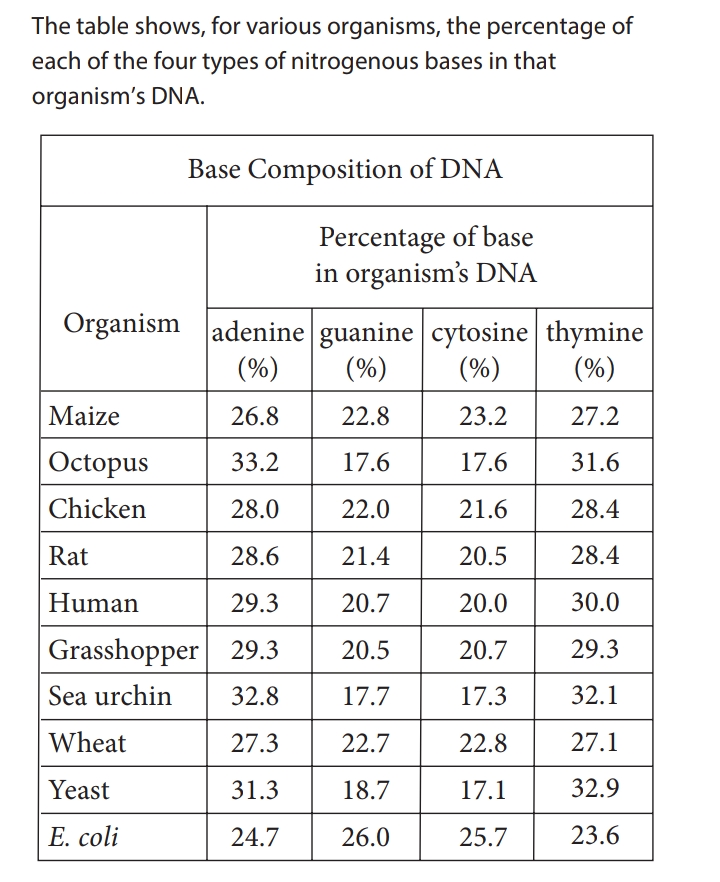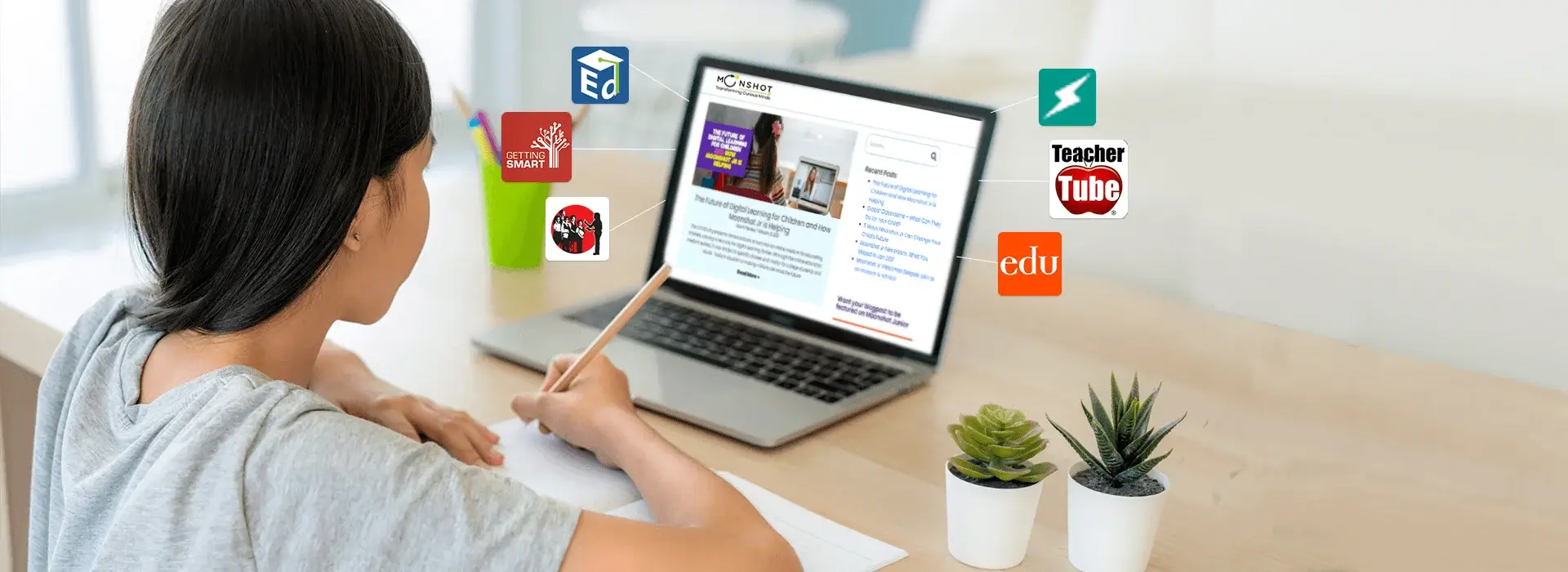Scoring a perfect 800 on the SAT Reading & Writing section may seem like an impossible task, but with the right strategies and preparation, you can absolutely achieve it! The key lies in understanding the test format, identifying common pitfalls, and practicing with purpose. In this guide, we will walk you through a step-by-step approach to mastering SAT Reading & Writing with over 50 practice questions to help you get there.
Understanding the SAT Reading & Writing Section
Before diving into strategies, let’s break down what this section entails.
| Section | Details |
|---|---|
| Reading and Writing | This section consists of 54 questions divided into two modules. It evaluates reading comprehension, grammar, punctuation, and sentence revision skills, covering literature, history, social sciences, and science. |
| Adaptive Format | The test adapts based on performance, with the second module adjusting in difficulty according to the first module’s results. |
Both modules contribute to a single score out of 800, so excelling in both is essential.
Recommended Reading: How Many Questions Are on the SAT? 2025 Update
Key Challenges Faced by Test-Takers
Many students struggle with:
- Time management: Passages are long, and questions are tricky.
- Vocabulary in context: Words often have meanings that change based on the passage.
- Grammar rules: The Writing section tests grammar concepts you may not have explicitly studied.
- Reading comprehension: Some passages, especially historical ones, are difficult to interpret.
Overcoming these challenges requires targeted practice and strategic test-taking skills.
Comprehensive Study Plan
Here’s a structured 8-week plan to boost your SAT Reading & Writing skills:
- Take a full-length SAT practice test.
- Identify weak areas and focus on specific question types.
- Learn time-saving reading techniques, like skimming efficiently.
- Practice with complex passages, especially historical ones.
- Improve annotation skills.
- Work on inference and main idea questions.
- Study punctuation, parallelism, subject-verb agreement, and other grammar rules.
- Focus on sentence improvement and organization.
- Start practicing timed writing sections.
- Simulate test-day conditions with timed full sections.
- Review mistakes carefully and refine strategies.
- Develop a test-day mindset and confidence.
Want improve your score in Math? Challenge yourself with the Hardest SAT Math Questions Ever
50+ SAT Reading & Writing Practice Questions
Passage : The Strangeness of Beauty by Lydia Minatoya)
Akira came directly, breaking all tradition. Was that it? Had he followed form—had he asked his mother to speak to his father to approach a go-between—would Chie have been more receptive?
He came on a winter’s eve. He pounded on the door while a cold rain beat on the shuttered veranda, so at first Chie thought him only the wind. The maid knew better. Chie heard her soft scuttling footsteps, the creak of the door. Then the maid brought a calling card to the drawing room, for Chie.
Chie was reluctant to go to her guest; perhaps she was feeling too cozy. She and Naomi were reading at a low table set atop a charcoal brazier. A thick quilt spread over the sides of the table so their legs were tucked inside with the heat.
“Who is it at this hour, in this weather?” Chie questioned as she picked the name card off the maid’s lacquer tray.
“Shinoda, Akira. Kobe Dental College,” she read.
Naomi recognized the name. Chie heard a soft intake of air.
“I think you should go,” said Naomi.
Akira was waiting in the entry. He was in his early twenties, slim and serious, wearing the black military-style uniform of a student. As he bowed—his hands hanging straight down, a black cap in one, a yellow oil-paper umbrella in the other—Chie glanced beyond him. In the glistening surface of the courtyard’s rain-drenched paving stones, she saw his reflection like a dark double.
“Madame,” said Akira, “forgive my disruption, but I come with a matter of urgency.”
His voice was soft, refined. He straightened and stole a deferential peek at her face.
In the dim light his eyes shone with sincerity. Chie felt herself starting to like him.
“Come inside, get out of this nasty night. Surely your business can wait for a moment or two.”
“I don’t want to trouble you. Normally I would approach you more properly but I’ve received word of a position. I’ve an opportunity to go to America, as dentist for Seattle’s Japanese community.”
“Congratulations,” Chie said with amusement. “That is an opportunity, I’m sure. But how am I involved?”
Even noting Naomi’s breathless reaction to the name card, Chie had no idea. Akira’s message, delivered like a formal speech, filled her with maternal amusement. You know how children speak so earnestly, so hurriedly, so endearingly about things that have no importance in an adult’s mind? That’s how she viewed him, as a child.
It was how she viewed Naomi. Even though Naomi was eighteen and training endlessly in the arts needed to make a good marriage, Chie had made no effort to find her a husband.
Akira blushed.
“Depending on your response, I may stay in Japan. I’ve come to ask for Naomi’s hand.”
Suddenly Chie felt the dampness of the night.
“Does Naomi know anything of your… ambitions?”
“We have an understanding. Please don’t judge my candidacy by the unseemliness of this proposal. I ask directly because the use of a go-between takes much time. Either method comes down to the same thing: a matter of parental approval. If you give your consent, I become Naomi’s yoshi.* We’ll live in the House of Fuji. Without your consent, I must go to America, to secure a new home for my bride.”
Eager to make his point, he’d been looking her full in the face. Abruptly, his voice turned gentle.
“I see I’ve startled you. My humble apologies. I’ll take no more of your evening. My address is on my card. If you don’t wish to contact me, I’ll reapproach you in two weeks’ time. Until then, good night.”
He bowed and left. Taking her ease, with effortless grace, like a cat making off with a fish.
“Mother?” Chie heard Naomi’s low voice and turned from the door. “He has asked you?”
The sight of Naomi’s clear eyes, her dark brows gave Chie strength. Maybe his hopes were preposterous.
“Where did you meet such a fellow? Imagine! He thinks he can marry the Fuji heir and take her to America all in the snap of his fingers!”
Chie waited for Naomi’s ripe laughter.
Naomi was silent. She stood a full half minute looking straight into Chie’s eyes. Finally, she spoke.
“I met him at my literary meeting.”
Naomi turned to go back into the house, then stopped.
“Mother.”
“Yes?”
“I mean to have him.”
A) Line 39 (“I don’t . . . you”)
B) Lines 39-42 (“Normally . . . community”)
C) Lines 58-59 (“Depending . . . Japan”)
D) Lines 72-73 (“I see . . . you”)
A) affection but not genuine love.
B) objectivity but not complete impartiality.
C) amusement but not mocking disparagement.
D) respect but not utter deference.
A) A careful analysis of a traditional practice
B) A detailed depiction of a meaningful encounter
C) A definitive response to a series of questions
D) A cheerful recounting of an amusing anecdote
A) Line 33 (“His voice . . . refined”)
B) Lines 49-51 (“You . . . mind”)
C) Lines 63-64 (“Please . . . proposal”)
D) Lines 71-72 (“Eager . . . face”)
A) appearance.
B) custom.
C) structure.
D) nature.
Passage: “Money Can’t Buy Love: Asymmetric Beliefs about Gift Price and Feelings of Appreciation”
Every day, millions of shoppers hit the stores in full force—both online and on foot—searching frantically for the perfect gift. Last year, Americans spent over $30 billion at retail stores in the month of December alone. Aside from purchasing holiday gifts, most people regularly buy presents for other occasions throughout the year, including weddings, birthdays, anniversaries, graduations, and baby showers. This frequent experience of gift-giving can engender ambivalent feelings in gift-givers. Many relish the opportunity to buy presents because gift-giving offers a powerful means to build stronger bonds with one’s closest peers. At the same time, many dread the thought of buying gifts; they worry that their purchases will disappoint rather than delight the intended recipients.
Anthropologists describe gift-giving as a positive social process, serving various political, religious, and psychological functions. Economists, however, offer a less favorable view. According to Waldfogel (1993), gift-giving represents an objective waste of resources. People buy gifts that recipients would not choose to buy on their own, or at least not spend as much money to purchase (a phenomenon referred to as “the deadweight loss of Christmas”). To illustrate, givers are likely to spend $100 to purchase a gift that receivers would spend only $80 to buy themselves. This “deadweight loss” suggests that gift-givers are not very good at predicting what gifts others will appreciate. That in itself is not surprising to social psychologists. Research has found that people often struggle to take account of others’ perspectives—their insights are subject to egocentrism, social projection, and multiple attribution errors.
What is surprising is that gift-givers have considerable experience acting as both gift-givers and gift-recipients, yet they still tend to overspend each time they purchase a meaningful gift. In this research, we propose a unique psychological explanation for this overspending problem—that gift-givers equate how much they spend with how much recipients will appreciate the gift. (The more expensive the gift, the stronger a gift-recipient’s feelings of appreciation.) Although a link between gift price and feelings of appreciation might seem intuitive to gift-givers, this assumption may be unfounded. Indeed, we propose that gift-recipients will be less inclined to base their feelings of appreciation on the magnitude of a gift than givers assume.
Why do gift-givers assume that gift price is closely linked to gift-recipients’ feelings of appreciation? Perhaps givers believe that bigger (i.e., more expensive) gifts convey stronger signals of thoughtfulness and consideration. According to Camerer (1988) and others, gift-giving represents a symbolic ritual, whereby gift-givers attempt to signal their positive attitudes toward the intended recipient and their willingness to invest resources in a future relationship. In this sense, gift-givers may be motivated to spend more money on a gift in order to send a “stronger signal” to their intended recipient.
As for gift-recipients, they may not interpret smaller and larger gifts as representing smaller and larger signals of thoughtfulness and consideration. The notion of gift-givers and gift-recipients being unable to account for the other party’s perspective seems puzzling because people slip in and out of these roles every day—sometimes even multiple times in the same day. Yet, despite extensive experience as both givers and receivers, people still fail to use information about their own preferences and experiences to make better decisions. In practical terms, people spend hundreds of dollars each year on gifts but somehow never learn to calibrate their gift expenditures according to personal insight.
A) Lines 10-13 (“Many . . . peers”)
B) Lines 22-23 (“People . . . own”)
C) Lines 31-32 (“Research . . . perspectives”)
D) Lines 44-47 (“Although . . . unfounded”)
A) regularity with which people shop for gifts.
B) recent increase in the amount of money spent on gifts.
C) anxiety gift shopping causes for consumers.
D) number of special occasions involving gift-giving.
A) functions as a form of self-expression.
B) is an inexpensive way to show appreciation.
C) requires the gift-recipient to reciprocate.
D) can serve to strengthen a relationship.
Passage: Space Mining: The Next Gold Rush?
Follow the money and you will end up in space.
That’s the message from a first-of-its-kind forum on mining beyond Earth.
Convened in Sydney by the Australian Centre for Space Engineering Research, the event brought together mining companies, robotics experts, lunar scientists, and government agencies that are all working to make space mining a reality.
The forum comes hot on the heels of the 2012 unveiling of two private asteroid-mining firms. Planetary Resources of Washington says it will launch its first prospecting telescopes in two years, while Deep Space Industries of Virginia hopes to be harvesting metals from asteroids by 2020. Another commercial venture that sprung up in 2012, Golden Spike of Colorado, will be offering trips to the moon, including to potential lunar miners.
Within a few decades, these firms may be meeting earthly demands for precious metals, such as platinum and gold, and the rare earth elements vital for personal electronics, such as yttrium and lanthanum. But like the gold rush pioneers who transformed the western United States, the first space miners won’t just enrich themselves. They also hope to build an off-planet economy free of any bonds with Earth, in which the materials extracted and processed from the moon and asteroids are delivered for space-based projects.
In this scenario, water mined from other worlds could become the most desired commodity. “In the desert, what’s worth more: a kilogram of gold or a kilogram of water?” asks Kris Zacny of HoneyBee Robotics in New York. “Gold is useless. Water will let you live.”
Water ice from the moon’s poles could be sent to astronauts on the International Space Station for drinking or as a radiation shield. Splitting water into oxygen and hydrogen makes spacecraft fuel, so ice-rich asteroids could become interplanetary refueling stations.
Companies are eyeing the iron, silicon, and aluminum in lunar soil and asteroids, which could be used in 3D printers to make spare parts or machinery. Others want to turn space dirt into concrete for landing pads, shelters, and roads.
A) It could yield materials important to Earth’s economy.
B) It could raise the value of some precious metals on Earth.
C) It could create unanticipated technological innovations.
D) It could change scientists’ understanding of space resources.
A) note the technological advances that make space mining possible.
B) provide evidence of the growing interest in space mining.
C) emphasize the large profits to be made from space mining.
D) highlight the diverse ways to carry out space mining operations.
Passage: Genetical Implications of the Structure of DNA” by Watson and Crick)
The chemical formula of deoxyribonucleic acid (DNA) is now well established. The molecule is a very long chain, the backbone of which consists of a regular alternation of sugar and phosphate groups. To each sugar is attached a nitrogenous base, which can be of four different types. Two of the possible bases—adenine and guanine—are purines, and the other two—thymine and cytosine—are pyrimidines. So far as is known, the sequence of bases along the chain is irregular. The monomer unit, consisting of phosphate, sugar, and base, is known as a nucleotide.
The first feature of our structure which is of biological interest is that it consists not of one chain, but of two. These two chains are both coiled around a common fiber axis. It has often been assumed that since there was only one chain in the chemical formula, there would only be one in the structural unit. However, the density, taken with the X-ray evidence, suggests very strongly that there are two.
The other biologically important feature is the manner in which the two chains are held together. This is done by hydrogen bonds between the bases. The bases are joined together in pairs, a single base from one chain being hydrogen-bonded to a single base from the other. The important point is that only certain pairs of bases will fit into the structure. One member of a pair must be a purine and the other a pyrimidine in order to bridge between the two chains. If a pair consisted of two purines, for example, there would not be room for it.
We believe that the bases will be present almost entirely in their most probable forms. If this is true, the conditions for forming hydrogen bonds are more restrictive, and the only pairs of bases possible are: adenine with thymine, and guanine with cytosine. Adenine, for example, can occur on either chain; but when it does, its partner on the other chain must always be thymine.
The phosphate-sugar backbone of our model is completely regular, but any sequence of the pairs of bases can fit into the structure. It follows that in a long molecule, many different permutations are possible, and it therefore seems likely that the precise sequence of bases is the code which carries the genetical information. If the actual order of the bases on one of the pair of chains were given, one could write down the exact order of the bases on the other one because of the specific pairing. Thus, one chain is, as it were, the complement of the other, and it is this feature which suggests how the deoxyribonucleic acid molecule might duplicate itself.

A) only very long chains of DNA can be taken from an organism with a spinal column.
B) the main structure of a chain in a DNA molecule is composed of repeating units.
C) a chain in a DNA molecule consists entirely of phosphate groups or of sugars.
D) nitrogenous bases form the main structural unit of DNA.
A) Lines 5-6 (“To each . . . types”)
B) Lines 9-10 (“So far . . . irregular”)
C) Lines 23-25 (“The bases . . . other”)
D) Lines 27-29 (“One member . . . chains”)
A) establish that DNA is the molecule that carries the genetic information.
B) present an alternate hypothesis about the composition of a nucleotide.
C) provide support for the authors’ claim about the number of chains in a molecule of DNA.
D) confirm the relationship between the density of DNA and the known chemical formula of DNA.
A) 17.1% and 18.7%
B) 17.1% and 32.9%
C) 18.7% and 31.3%
D) 31.3% and 32.9%
A) 17.3% and 17.7%
B) 17.3% and 32.1%
C) 17.3% and 32.8%
D) 17.7% and 32.8%
A) The same; “Two of . . . pyrimidines” (lines 6-8)
B) The same; “The important . . . structure” (lines 25-26)
C) It varies; “Adenine . . . thymine” (lines 36-38)
D) It varies; “It follows . . . information” (lines 41-45)
Passage: “Three Guineas”
Close at hand is a bridge over the River Thames, an admirable vantage ground for us to make a survey. The river flows beneath; barges pass, laden with timber, bursting with corn; there on one side are the domes and spires of the city; on the other, Westminster and the Houses of Parliament. It is a place to stand on by the hour, dreaming. But not now. Now we are pressed for time. Now we are here to consider facts; now we must fix our eyes upon the procession—the procession of the sons of educated men.
There they go, our brothers who have been educated at public schools and universities, mounting those steps, passing in and out of those doors, ascending those pulpits, preaching, teaching, administering justice, practicing medicine, transacting business, making money. It is a solemn sight always—a procession, like a caravanserai crossing a desert… But now, for the past twenty years or so, it is no longer a sight merely, a photograph, or fresco scrawled upon the walls of time, at which we can look with merely an aesthetic appreciation. For there, trapesing along at the tail end of the procession, we go ourselves. And that makes a difference.
We who have looked so long at the pageant in books, or from a curtained window watched educated men leaving the house at about nine-thirty to go to an office, returning to the house at about six-thirty from an office, need look passively no longer. We too can leave the house, can mount those steps, pass in and out of those doors, … make money, administer justice… We who now agitate these humble pens may in another century or two speak from a pulpit. Nobody will dare contradict us then; we shall be the mouthpieces of the divine spirit—a solemn thought, is it not?
Who can say whether, as time goes on, we may not dress in military uniform, with gold lace on our breasts, swords at our sides, and something like the old family coal-scuttle on our heads, save that that venerable object was never decorated with plumes of white horsehair. You laugh—indeed the shadow of the private house still makes those dresses look a little queer. We have worn private clothes so long… But we have not come here to laugh, or to talk of fashions—men’s and women’s. We are here, on the bridge, to ask ourselves certain questions.
And they are very important questions; and we have very little time in which to answer them. The questions that we have to ask and to answer about that procession during this moment of transition are so important that they may well change the lives of all men and women forever.
For we have to ask ourselves, here and now, do we wish to join that procession, or don’t we? On what terms shall we join that procession? Above all, where is it leading us, the procession of educated men? The moment is short; it may last five years; ten years, or perhaps only a matter of a few months longer… But, you will object, you have no time to think; you have your battles to fight, your rent to pay, your bazaars to organize.
That excuse shall not serve you, Madam. As you know from your own experience, and there are facts that prove it, the daughters of educated men have always done their thinking from hand to mouth; not under green lamps at study tables in the cloisters of secluded colleges. They have thought while they stirred the pot, while they rocked the cradle. It was thus that they won us the right to our brand-new sixpence.
It falls to us now to go on thinking; how are we to spend that sixpence? Think we must. Let us think in offices; in omnibuses; while we are standing in the crowd watching Coronations and Lord Mayor’s Shows; let us think… in the gallery of the House of Commons; in the Law Courts; let us think at baptisms and marriages and funerals. Let us never cease from thinking—what is this “civilization” in which we find ourselves? What are these ceremonies and why should we take part in them? What are these professions and why should we make money out of them? Where in short is it leading us, the procession of the sons of educated men?
A) educated women face a decision about how to engage with existing institutions.
B) women can have positions of influence in English society only if they give up some of their traditional roles.
C) the male monopoly on power in English society has had grave and continuing effects.
D) the entry of educated women into positions of power traditionally held by men will transform those positions.
A) is conducive to a mood of fanciful reflection.
B) provides a good view of the procession of the sons of educated men.
C) is within sight of historic episodes to which she alludes.
D) is symbolic of the legacy of past and present sons of educated men.
A) reflect the growing friendliness among a group of people.
B) advance the need for candor among a group of people.
C) establish a sense of solidarity among a group of people.
D) reinforce the need for respect among a group of people.
A) controversial and threatening.
B) weighty and unanswerable.
C) momentous and pressing.
D) provocative and mysterious.
A) Tolerance
B) Knowledge
C) Opportunity
D) Perspective
Passage: Whey to Go
Greek yogurt—a strained form of cultured yogurt—has grown enormously in popularity in the United States since it was first introduced in the country in the late 1980s.
From 2011 to 2012 alone, sales of Greek yogurt in the US increased by 50 percent. The resulting increase in Greek yogurt production has forced those involved in the business to address the detrimental effects that the yogurt-making process may be having on the environment. Fortunately, farmers and others in the Greek yogurt business have found many methods of controlling and eliminating most environmental threats. Given these solutions as well as the many health benefits of the food, the advantages of Greek yogurt outweigh the potential drawbacks of its production.
The main environmental problem caused by the production of Greek yogurt is the creation of acid whey as a by-product. Because it requires up to four times more milk to make than conventional yogurt does, Greek yogurt produces larger amounts of acid whey, which is difficult to dispose of. If it is improperly introduced into the environment, acid-whey runoff can pollute waterways, depleting the oxygen content of streams and rivers as it decomposes. To address the problem of disposal, farmers have found a number of uses for acid whey. They can add it to livestock feed as a protein supplement, and people can make their own Greek-style yogurt at home by straining regular yogurt. Yogurt manufacturers, food scientists, and government officials are also working together to develop additional solutions for reusing whey.
Though these conservation methods can be costly and time-consuming, they are well worth the effort. Nutritionists consider Greek yogurt to be a healthy food: it is an excellent source of calcium and protein, serves to be a digestive aid, and it contains few calories in its unsweetened low- and non-fat forms. Greek yogurt is slightly lower in sugar and carbohydrates than conventional yogurt is. Also, because it is more concentrated, Greek yogurt contains slightly more protein per serving, thereby helping people stay satiated for longer periods of time.
These health benefits have prompted Greek yogurt’s recent surge in popularity. In fact, Greek yogurt can be found in an increasing number of products such as snack foods and frozen desserts. Because consumers reap the nutritional benefits of Greek yogurt and support those who make and sell it, farmers and businesses should continue finding safe and effective methods of producing the food.
A) NO CHANGE
B) defeat
C) outperform
D) outweigh
A) NO CHANGE
B) can pollute waterways,
C) could have polluted waterways,
D) has polluted waterways,
A) where it is now.
B) after sentence 1.
C) after sentence 2.
D) after sentence 3.
A) NO CHANGE
B) as
C) like
D) for
A) NO CHANGE
B) fulfilled
C) complacent
D) sufficient
A) Yes, because it does not provide a transition from the previous paragraph.
B) Yes, because it fails to support the main argument of the passage.
C) No, because it continues the explanation of how acid whey can be disposed of safely.
D) No, because it sets up the argument in the paragraph for the benefits of Greek yogurt.
Passage: Dark Snow
Most of Greenland’s interior is covered by a thick layer of ice and compressed snow known as the Greenland Ice Sheet. The size of the ice sheet fluctuates seasonally: in summer, average daily high temperatures in Greenland can rise to slightly above 50 degrees Fahrenheit, partially melting the ice; in the winter, the sheet thickens as additional snow falls, and average daily low temperatures can drop to as low as 20 degrees Fahrenheit.
Typically, the ice sheet begins to show evidence of thawing in late summer. This follows several weeks of higher temperatures. For example, in the summer of 2012, virtually the entire Greenland Ice Sheet underwent thawing at or near its surface by mid-July, the earliest date on record. Most scientists looking for the causes of the Great Melt of 2012 have focused exclusively on rising temperatures. The summer of 2012 was the warmest in 170 years, records show. But Jason Box, an associate professor of geology at Ohio State University, believes that another factor added to the early thaw: the “dark snow” problem.
According to Box, a leading Greenland expert, tundra fires in 2012 from as far away as North America produced great amounts of soot, some of which drifted over Greenland in giant plumes of smoke and then fell as particles onto the ice sheet. Scientists have long known that soot particles facilitate melting by darkening snow and ice, limiting its ability to reflect the Sun’s rays. As Box explains, “Soot is an extremely powerful light absorber. It settles over the ice and captures the Sun’s heat.” The result is a self-reinforcing cycle. As the ice melts, the land and water under the ice become exposed, and since land and water are darker than snow, the surface absorbs even more heat, which leads to additional melting.
Box’s research is important because the fires of 2012 may not be a one-time phenomenon. According to scientists, rising Arctic temperatures are making northern latitudes greener and thus more fire-prone. The pattern Box observed in 2012 may repeat itself, possibly with harmful effects on the Arctic ecosystem. Box is currently organizing an expedition to gather this crucial information. The next step for Box and his team is to travel to Greenland to perform direct sampling of the ice in order to determine just how much the soot is contributing to the melting of the ice sheet. Members of the public will be able to track his team’s progress—and even help fund the expedition—through a website Box has created.
A) summer, following
B) summer, and this thawing follows
C) summer, and such thawing follows
D) summer and this evidence follows
A) NO CHANGE
B) soot
C) of which
D) DELETE the underlined portion.
A) NO CHANGE
B) its
C) there
D) their
A) where it is now.
B) after sentence 1.
C) after sentence 2.
D) after sentence 5.
Passage: The Consolations of Philosophy
Long viewed by many as the stereotypical useless major, philosophy is now being seen by many students and prospective employers as in fact a very useful and practical major, offering students a host of transferable skills with relevance to the modern workplace. (34) In broad terms, philosophy is the study of meaning and the values underlying thought and behavior. But (35) more pragmatically, the discipline encourages students to analyze complex material, question conventional beliefs, and express thoughts in a concise manner.
Because philosophy (36) teaching students not what to think but how to think, the age-old discipline offers consistently useful tools for academic and professional achievement. (37) A 1994 survey concluded that only 18 percent of American colleges required at least one philosophy course. (38) Therefore, between 1992 and 1996, more than 400 independent philosophy departments were eliminated from institutions.
More recently, colleges have recognized the practicality and increasing popularity of studying philosophy and have markedly increased the number of philosophy programs offered. By 2008 there were 817 programs, up from 765 a decade before. In addition, the number of four-year graduates in philosophy has grown 46 percent in a decade. Also, studies have found that those students who major in philosophy often do better than students from other majors in both verbal reasoning and analytical (39) writing. These results can be measured by standardized test scores. On the Graduate Record Examination (GRE), for example, students intending to study philosophy in graduate school (40) has scored higher than students in all but four other majors.
These days, many (41) student’s majoring in philosophy have no intention of becoming philosophers; instead, they plan to apply those skills to other disciplines. Law and business specifically benefit from the complicated theoretical issues raised in the study of philosophy, but philosophy can be just as useful in engineering or any field requiring complex analytic skills. (42) That these skills are transferable across professions (43) which makes them especially beneficial to twenty-first-century students. Because today’s students can expect to hold multiple jobs—some of which may not even exist yet—during (44) our lifetime, studying philosophy allows them to be flexible and adaptable.
High demand, advanced exam scores, and varied professional skills all argue for maintaining and enhancing philosophy courses and majors within academic institutions.
A) NO CHANGE
B) teaches
C) to teach
D) and teaching
A) NO CHANGE
B) For example,
C) In contrast,
D) Nevertheless,
A) Consequently, philosophy students have been receiving an increasing number of job offers.
B) Therefore, because of the evidence, colleges increased their offerings in philosophy.
C) Notwithstanding the attractiveness of this course of study, students have resisted majoring in philosophy.
D) However, despite its many utilitarian benefits, colleges have not always supported the study of philosophy.
A) NO CHANGE
B) Thus,
C) Moreover,
D) However,
Passage: Coworking: A Creative Solution
When I left my office job as a website developer at a small company for a position that allowed me to work full-time from home, I thought I had it made: I gleefully traded in my suits and dress shoes for sweatpants and slippers, my frantic early-morning bagged lunch packing for a leisurely midday trip to my refrigerator. The novelty of this comfortable work-from-home life, however, soon got worn off quickly. Within a month, I found myself feeling isolated despite having frequent email and instant messaging contact with my colleagues. Having become frustrated trying to solve difficult problems, no colleagues were nearby to share ideas. It was during this time that I read an article into coworking spaces.
The article, published by Forbes magazine, explained that coworking spaces are designated locations that, for a fee, individuals can use to conduct their work. The spaces are usually stocked with standard office equipment, such as photocopiers, printers, and fax machines. In these locations, however, the spaces often include small meeting areas and larger rooms for hosting presentations. The cost of launching a new coworking business in the United States is estimated to be approximately $58,000.
What most caught my interest, though, was a quotation from someone who described coworking spaces as “melting pots of creativity.” The article refers to a 2012 survey in which 64 percent of respondents noted that coworking spaces prevented them from completing tasks in a given time. The article goes on to suggest that the most valuable resources provided by coworking spaces are actually the people whom use them.
[1] Thus, even though I already had all the equipment I needed in my home office, I decided to try using a coworking space in my city. [2] Because I was specifically interested in coworking’s reported benefits related to creativity, I chose a facility that offered a bright, open work area where I wouldn’t be isolated.
[3] Throughout the morning, more people appeared. [4] Periods of quiet, during which everyone worked independently, were broken up occasionally with lively conversation.
I liked the experience so much that I now go to the coworking space a few times a week. Over time, I’ve gotten to know several of my coworking colleagues: another website developer, a graphic designer, a freelance writer, and several mobile app coders. Even those of us who work in disparate fields are able to share advice and help each other brainstorm. In fact, it’s the diversity of their talents and experiences that makes my coworking colleagues so valuable.
Which choice best clarifies the intended meaning of the sentence?
A) NO CHANGE
B) colleagues were important for sharing ideas.
C) ideas couldn’t be shared with colleagues.
D) I missed having colleagues nearby to consult.
Which choice correctly punctuates the phrase?
A) NO CHANGE
B) equipment, such as:
C) equipment such as:
D) equipment, such as,
A) NO CHANGE
B) 71 percent of respondents indicated that using a coworking space increased their creativity.
C) Respondents credited coworking spaces with giving them 74 percent of their ideas relating to business.
D) Respondents revealed that their ability to focus on their work improved by 12 percent in a coworking space.
A) NO CHANGE
B) colleagues;
C) colleagues,
D) colleagues
A) Kept, because it provides a detail that supports the main topic of the paragraph.
B) Kept, because it sets up the main topic of the paragraph that follows.
C) Deleted, because it blurs the paragraph’s main focus with a loosely related detail.
D) Deleted, because it repeats information that has been provided in an earlier paragraph.
To dye wool, Navajo (Diné) weaver Lillie Taylor uses plants and vegetables from Arizona, where she lives. For example, she achieved the deep reds and browns featured in her 2003 rug In the Path of the Four Seasons by using Arizona dock roots, drying and grinding them before mixing the powder with water to create a dye bath. To intensify the appearance of certain colors, Taylor also sometimes mixes in clay obtained from nearby soil.
A) Reds and browns are not commonly featured in most of Taylor’s rugs.
B) In the Path of the Four Seasons is widely acclaimed for its many colors and innovative weaving techniques.
C) Taylor draws on local resources in the approach she uses to dye wool.
D) Taylor finds it difficult to locate Arizona dock root in the desert.
“Ghosts of the Old Year” is an early 1900s poem by James Weldon Johnson. In the poem, the speaker describes experiencing an ongoing cycle of anticipation followed by regretful reflection: ______
A) “The snow has ceased its fluttering flight, / The wind sunk to a whisper light, / An ominous stillness fills the night, / A pause—a hush.”
B) “And so the years go swiftly by, / Each, coming, brings ambitions high, / And each, departing, leaves a sigh / Linked to the past.”
C) “What does this brazen tongue declare, / That falling on the midnight air / Brings to my heart a sense of care / Akin to fright?”
D) “It tells of many a squandered day, / Of slighted gems and treasured clay, / Of precious stores not laid away, / Of fields unreaped.”
A) “The snow has ceased its fluttering flight, / The wind sunk to a whisper light, / An ominous stillness fills the night, / A pause—a hush.”
B) “And so the years go swiftly by, / Each, coming, brings ambitions high, / And each, departing, leaves a sigh / Linked to the past.”
C) “What does this brazen tongue declare, / That falling on the midnight air / Brings to my heart a sense of care / Akin to fright?”
D) “It tells of many a squandered day, / Of slighted gems and treasured clay, / Of precious stores not laid away, / Of fields unreaped.”
Passage: “How the Web Affects Memory”
(Adapted from “How the Web Affects Memory,” ©2011 by Harvard Magazine Inc.)
Search engines have changed the way we use the Internet, putting vast sources of information just a few clicks away. But Harvard professor of psychology Daniel Wegner’s recent research proves that websites—and the Internet—are changing much more than technology itself. They are changing the way our memories function.
Wegner’s latest study, Google Effects on Memory: Cognitive Consequences of Having Information at Our Fingertips, shows that when people have access to search engines, they remember fewer facts and less information because they know they can rely on “search” as a readily available shortcut.
Wegner, the senior author of the study, believes the new findings show that the Internet has become part of a transactive memory source, a method by which our brains compartmentalize information. First hypothesized by Wegner in 1985, transactive memory exists in many forms, as when a husband relies on his wife to remember a relative’s birthday. “[It is] this whole network of memory where you don’t have to remember everything in the world yourself,” he says. “You just have to remember who knows it.” Now computers and technology as well are becoming virtual extensions of our memory.
The idea validates habits already forming in our daily lives. Cell phones have become the primary location for phone numbers. GPS devices in cars remove the need to memorize directions. Wegner points out that we never have to stretch our memories too far to remember the name of an obscure movie actor or the capital of Kyrgyzstan—we just type our questions into Google. “We become part of the Internet in a way,” he says. “We become part of the system and we end up trusting it.”
Working with researchers Betsy Sparrow of Columbia University and Jenny Liu of the University of Wisconsin–Madison, Wegner conducted four experiments to demonstrate the phenomenon, using various forms of memory recall to test reliance on computers. In the first experiment, participants demonstrated that they were more likely to think of computer terms like “Yahoo” or “Google” after being asked a set of difficult trivia questions. In two other experiments, participants were asked to type a collection of readily memorable statements, such as “An ostrich’s eye is bigger than its brain.” Half the subjects were told that their work would be saved to a computer; the other half were informed that the statements would be erased. In subsequent memory testing, participants who were told their work would not be saved were best at recalling the statements. In a fourth experiment, participants typed into a computer statements they were told would be saved in specific folders. Next, they were asked to recall the statements. Finally, they were given cues to the wording and asked to name the folders where the statements were stored. The participants proved better able to recall the folder locations than the statements themselves.
Wegner concedes that questions remain about whether dependence on computers will affect memories negatively: “Nobody knows now what the effects are of these tools on logical thinking.” Students who have trouble remembering distinct facts, for example, may struggle to employ those facts in critical thinking. But he believes that the situation overall is beneficial, likening dependence on computers to dependence on a mechanical hand or other prosthetic device.
And even though we may not be taxing our memories to recall distinct facts, we are still using them to consider where the facts are located and how to access them. “We still have to remember things,” Wegner explains. “We’re just remembering a different range of things.” He believes his study will lead to further research into understanding computer dependence and looks forward to tracing the extent of human interdependence with the computer world—pinpointing the “movable dividing line between us and our computers in cyber networks.”
A) show that people who are closely related tend to have shared memories.
B) demonstrate how people initially developed external sources of memory.
C) emphasize the effectiveness and accuracy of transactive memory sources.
D) illustrate the concept of a transactive memory source using a familiar situation.
A) required to memorize details that will then be made inaccessible.
B) directed to develop a system for organizing and saving content.
C) asked to provide facts that are not already familiar to them.
D) prompted to identify terms related to dependence on computers.
A) 7%
B) 10%
C) 17%
D) 30%a
A) Those participants focused on remembering the folder locations.
B) Those participants attempted to remember the statements and the folder locations.
C) Those participants did not attempt to remember any specific pieces of information.
D) There is not enough information to determine the cause of the results for those participants.
A) describe a series of experiments on the way technology interferes with critical thinking.
B) assert that people have become overly dependent on computers for storing information.
C) discuss the idea that humans’ capacity for memory is much weaker than it once was.
D) share the findings of a study examining the effect of computer use on memory recall.
Passage: Adapted from Digging Up Cities
As a construction crew began to tear up sidewalks in New York City’s South Street Seaport to replace a water pipe, Alyssa Loorya and her team watched eagerly, picks and brushes in hand. Loorya, an urban archaeologist, studies the history of cities. Any New York City construction project using municipal funds is required to consider whether historical artifacts will be affected during construction, and if that possibility exists, an urban archaeologist must be consulted. Since the South Street Seaport area was a bustling commercial center for early colonists, Loorya anticipated that a rich history lay beneath the pavement. “It’s our job to document and recover that history before it’s lost,” she said.
A) Yes, because it helps set up the rest of the passage by explaining what urban archaeologists do.
B) Yes, because it identifies the characteristics that make particular cities worthy of archaeological study.
C) No, because it does not give enough detail about the kinds of artifacts that urban archaeologists typically find.
D) No, because it does not explain how excavation benefits the study of a city’s history.
A) NO CHANGE
B) blood, sweat, and tears
C) hassle
D) feats of strength and fortitude
A) NO CHANGE
B) also requires planners to make careful considerations about changes in service.
C) might also have a negative impact on the environment as more service is added.
D) also has the drawback of increasing crowding on public transportation.
Advanced Strategies To Score 800 on SAT Reading & Writing Test
- Active Reading: Train yourself to summarize key points mentally after each paragraph.
- Process of Elimination: If two answer choices seem correct, re-read the sentence with each option.
- Grammar Shortcut: If unsure about a grammar rule, read the sentence out loud. If it sounds awkward, it’s probably incorrect.
- Time-Saving Techniques: Skip particularly hard questions and return to them later.
Recommended Reading
If you are preparing for the SAT exam, then these articles will help you to achieve your desired score. Here are the recommended articles you must read:
Last-Minute Tips For SAT Exam
- Mental Readiness: Stay calm, believe in your preparation, and avoid last-minute cramming.
- Physical Readiness: Get at least 8 hours of sleep before test day, eat a healthy breakfast, and stay hydrated.
- Logistics: Double-check your test location, bring necessary items (ID, admission ticket, calculator, pencils), and arrive early.
Conclusion
Scoring an 800 on SAT Reading & Writing is achievable with dedication and strategic preparation. Follow this guide, practice consistently, and stay confident. Got questions or need help? Drop a comment below!
Want to excite your child about math and sharpen their math skills? Moonpreneur’s online math curriculum is unique as it helps children understand math skills through hands-on lessons, assists them in building real-life applications, and excites them to learn math.
You can opt for our Advanced Math or Vedic Math+Mental Math courses. Our Math Quiz for grades 3rd, 4th, 5th, and 6th helps in further exciting and engaging in mathematics with hands-on lessons.

























